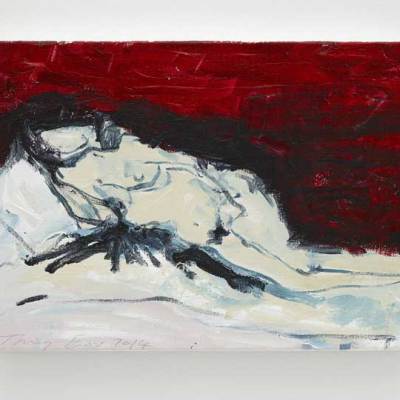William Morris’s tempestuous but thoughtful personality, and his vision of a different kind of society are at the centre of the National Portrait Gallery’s next exhibition. The curator Fiona McCarthy believes that the contribution of the multi-talented designer and political campaigner remains relevant in today’s world.
‘We are still looking at many of his anxieties: the loss of skills, the lack of worthwhile occupations and the ecological crisis. The issue of art and its importance, which Morris championed, is still important at a time when we are experiencing widespread cuts in the arts and creative teaching in schools’, she told The Muse Room.
The NPG’s show will not try to emulate the Victoria and Albert Museum’s comprehensive overview of 1996 – the last major presentation of Morris’s work, which considered his contribution to design and architecture.
Instead, McCarthy will draw primarily on the National Portrait Gallery’s own collection. She wants to focus attention on Morris’s vision of art for the whole people rather than the elite, and how his ideas spread through different groups in the 20th century.
‘It’s an unusual show for the NPG, in that while still based on images of people, it will include many objects. There will be a section on the Red House in Bexleyheath, co-designed by Morris and Philip Webb, jewellery drawn from the Guild of Handicraft collection at the Victoria and Albert museum plus a newly restored wardrobe from the Ashmolean Museum painted by Morris’s close friend and life-long collaborator Edward Burne-Jones.’
A lovingly-designed cabinet by Arts and Crafts architect CFA Voysey for Morris’s copy of Chaucer’s poetry will be displayed, plus lustreware by William de Morgan alongside a portrait of the potter by his wife Evelyn.
‘Morris was an anarchist’, McCarthy says, ‘who wanted a whole new society. He was quite politically ferocious in the 1880s – he wanted to demolish structures in society. People often ignore his revolutionary views and see him simply as a wallpaper designer’.
Morris’s modest shoulder satchel is a reminder of how he toted his self-published pamphlets with their poems, chants, membership cards and political tracts. Designed by Morris together with the socialist illustrator-artist Walter Crane, the originals will give a flavour of the campaigns of the day. Contemporary photographs, drawings and paintings will show a wide circle of friends and contemporaries such as George Bernard Shaw, the matchgirls’ leader Annie Besant and Karl Marx’s daughter Eleanor.
From the turn of the century Arts and Crafts movement, through to the 1920s and 1930s, Morris’s vision of handmade objects continued to inspire groups of craft practitioners – potters, weavers and printers, some of whom set up dedicated communities.
McCarthy points to the 1944 founding of the Council of Industrial Design (today’s Design Council) as an effort to revive Morris’s drive to improve design standards. She sees ‘a Morris effect’ in the Festival of Britain too – somewhat ironically, given her emphasis on his anarchist credentials.
Many politicians – even Tony Blair, who called the artist his hero – have sought to associate themselves with Morris’s drive and genius, ignoring the fact that, as McCarthy notes, Morris himself thought the best function for the Houses of Parliament would be to store manure.
‘Anarchy and Beauty: William Morris and His Legacy, 1860–1960’ is at the National Portrait Gallery, London, until 11 January 2015.
Related Articles
‘Rossetti’s Obsession: Images of Jane Morris’ at the William Morris Gallery (Carey Gibbons)





